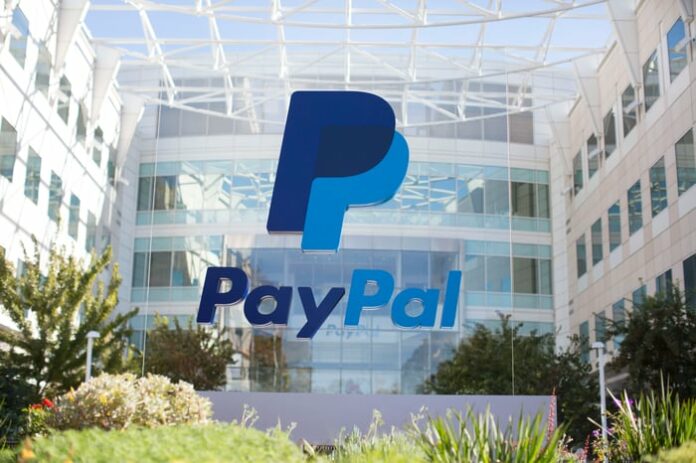PayPal‘s (NASDAQ: PYPL) stock has surged 41% this year as the digital payments giant seeks to overcome past difficulties under new leadership. But is it still a good investment for those looking at long-term growth? This analysis will examine PayPal’s business model, key challenges, and current valuations.

Image source: PayPal.
Identifying PayPal’s Key Challenges
Although PayPal boasts one of the largest digital payment platforms globally, a significant portion of its revenue was historically tied to its former parent company, eBay. Concerns grew when eBay selected Dutch competitor Adyen as its primary payment platform from 2018 to 2023.
The COVID-19 pandemic temporarily hid PayPal’s loss of revenue from eBay due to a rise in digital payment usage. However, as these conditions normalised, growth in active accounts, total payment volume (TPV), and revenue slowed. Factors such as inflation and climbing interest rates contributed to this downturn in 2023.
|
Metric |
2019 |
2020 |
2021 |
2022 |
2023 |
YTD 2024 |
|---|---|---|---|---|---|---|
|
Active accounts growth |
14% |
24% |
13% |
2% |
(2%) |
1% |
|
TPV growth |
23% |
31% |
33% |
9% |
13% |
11% |
|
Revenue growth |
15% |
21% |
18% |
8% |
8% |
8% |
Data source: PayPal.
The most pressing issue for PayPal is its struggle to attract new active accounts. The company reported a 1% year-over-year increase to 432 million active accounts in the third quarter of 2024, falling short of its previous target of 750 million by 2025.
PayPal abandoned that goal in early 2022 and faces fierce competition from other platforms like Block‘s Cash App, Stripe, and Apple Pay.
To counteract this challenge, PayPal has shifted its focus to its Venmo and Braintree platforms to enhance TPV. However, this strategy presents a dilemma as both platforms typically yield lower transaction rates compared to its main service, leading to a decline in annual transaction rates since its spin-off from eBay in 2015.
Looking Ahead: PayPal’s Future Plans
To enhance its growth, PayPal aims to increase the average TPV per account, particularly since gaining new users remains challenging. Under CEO Alex Chriss, who took office last year, PayPal has introduced several new features, including FastLane checkout, Smart Receipts, and Cash Pass rewards. The company is also expanding its buy now, pay later services to compete with firms like Affirm and Block’s Afterpay, while utilizing its PayPal USD stablecoin for cross-border transactions.
These initiatives could foster customer loyalty, explore higher-growth markets, and increase TPV per account. Additionally, PayPal is focused on reducing costs to improve transaction margins, which have grown sequentially over the last two quarters. Over the past year, it repurchased $5.4 billion worth of shares to support earnings per share (EPS).
Balancing investment and cost-cutting will likely be challenging for PayPal. Nonetheless, for the full year, it projects an adjusted EPS growth in the “high teens” along with an anticipated 30% increase in free cash flow (FCF), which is estimated to reach approximately $6 billion, with plans for $6 billion in stock buybacks.
PayPal has navigated the loss of eBay’s business, faced inflation, and continued to generate revenue from existing users. From 2023 to 2026, analysts predict revenue and EPS will grow at a compound annual growth rate of 6% and 11%, respectively. While the company has moved past its peak growth period, the stock appears fairly valued at about 18 times the anticipated earnings for next year.
However, it does not qualify as a value stock. Consequently, at the current price of under $87, I would hesitate to purchase PayPal shares. Instead, I would consider investing in faster-growing fintech companies before PayPal addresses its long-term obstacles.
Don’t Miss This Chance for Potential Profit
Have you ever felt you missed an opportunity to invest in top-performing stocks? You’ll want to pay attention to this.
Our expert analysts occasionally recommend a “Double Down” stock, indicating companies poised for significant growth. If you’re worried you missed your window, the time to invest is now before prices rise. Here are some impressive statistics:
- Nvidia: If you invested $1,000 when we doubled down in 2009, you’d have $368,053!*
- Apple: If you invested $1,000 when we doubled down in 2008, you’d have $43,533!*
- Netflix: If you invested $1,000 when we doubled down in 2004, you’d have $484,170!*
Right now, we are issuing “Double Down” alerts for three remarkable companies, and the opportunity might not present itself again soon.
See 3 “Double Down” stocks »
*Stock Advisor returns as of November 18, 2024
Leo Sun has positions in Apple. The Motley Fool has positions in and recommends Adyen, Apple, Block, and PayPal. The Motley Fool recommends eBay and holds options: long January 2027 $42.50 calls on PayPal and short December 2024 $70 calls on PayPal. The Motley Fool adheres to a strict disclosure policy.
The views and opinions expressed herein are those of the author and do not necessarily reflect those of Nasdaq, Inc.

